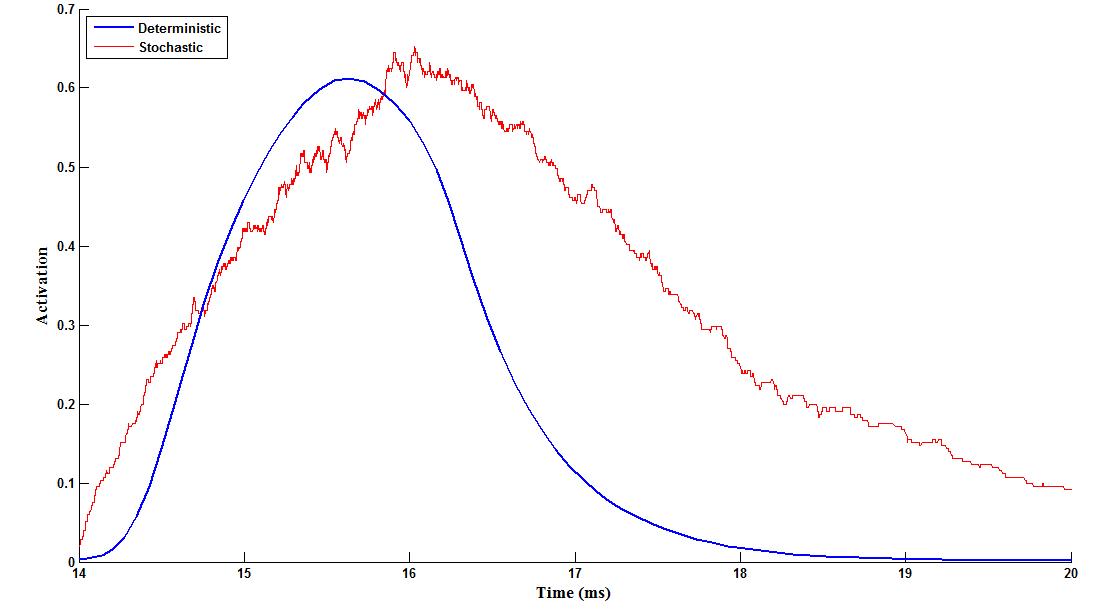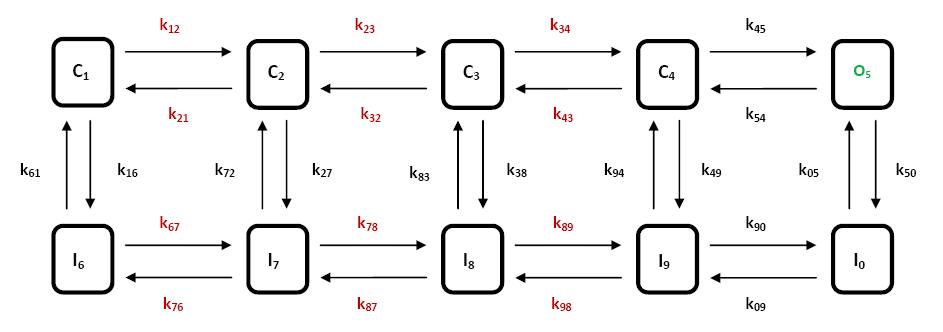Team:Valencia/StochasticApproach
From 2009.igem.org
| Line 1: | Line 1: | ||
{{Template:Valencia09iGEM23}} | {{Template:Valencia09iGEM23}} | ||
| + | <html> | ||
| + | <style> | ||
| + | #content{ | ||
| + | height: 2500px; | ||
| + | } | ||
| + | </style> | ||
| + | </html> | ||
| + | |||
<br> | <br> | ||
| - | <div align="justify" style="position:relative; top:- | + | <div align="justify" style="position:relative; top:-250px; left:10px; width:700px"> |
=='''Stochastic approach'''== | =='''Stochastic approach'''== | ||
Revision as of 22:12, 21 October 2009
Stochastic approach
At this point, we are going to use stochastic methods in order to study the activation/inactivation of VDCCs. Unlike deterministic model, the voltage-dependent conductance for the calcium channels is now given by:
Where the quotient QCa/NCa (number of calcium channels in open state / total number of calcium channels) means the activation variable and ![]() is the maximum calcium conductance. Each calcium channel is a Markov process with some voltage-dependent transition rates. The kinetic scheme is the following:
is the maximum calcium conductance. Each calcium channel is a Markov process with some voltage-dependent transition rates. The kinetic scheme is the following:
As it is shown, each calcium gate has four closed states (Ci), five inactivated states (Ii) and one open state (O5). Calcium influx occurs only when the gate is in the open state. kij are the different transition rates (voltage-dependent in red and voltage-independent in black) between two states.
Taking into account how voltage-dependent rates change in time and considering the probability of each transition (given by its transition rate), we have been able to select which transition happens and determine how many calcium gates are in open state (QCa) at any time. Therefore, knowing the total number of calcium channels in the plasma membrane (NCa = 1000) we can calculate the activation variable for each time.
In the following figure activation variables from the deterministic and the stochastic model are compared. We have only considered the time interval closer to the stimulus application:

 "
"

